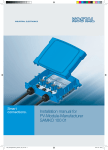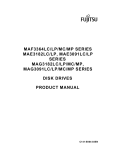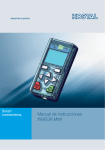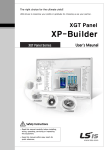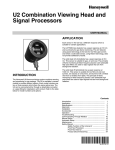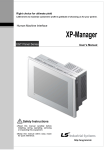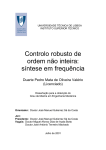Download Installation manual for PV-Module-Manufacturer SAMKO
Transcript
Installation manual for PV-Module-Manufacturer SAMKO 100 04 KIE_Montageanleitung_Samko_100_04.indd 1 23.07.13 08:52 About us KOSTAL Industrie Elektrik GmbH An der Bellmerei 10 58513 Lüdenscheid Germany Telephone: +49 2351 16 - 0 Fax: +49 2351 16 - 2400 [email protected] Postal address: KOSTAL Industrie Elektrik GmbH Lange Eck 11 58099 Hagen Germany Telephone: +49 2331 8040 - 4800 Fax: +49 2331 8040 - 4601 Exclusion of liability All names of usage, trade names, product names or other designations given in this manual may be legally protected even without special labelling (e.g. as a trademark). The KOSTAL company assumes no liability for their free usage. The illustrations and texts have been compiled with great care. However, the possibility of errors cannot be ruled out. There is no guarantee of the correctness of the illustrations and texts in this compilation. General note on non-discrimination The KOSTAL company publishers are aware of the meaning of language with regard to the equality of women and men and always make an effort to reflect this in the documentation. Nevertheless, for the sake of readability we are unable to use non-gender-specific terms throughout and have used the masculine form as a rule. © 2013 KOSTAL Industrie Elektrik GmbH All rights reserved by KOSTAL, including those of reproduction by photocopy and storage in electronic media. Commercial use or distribution of the texts, models, diagrams and photographs appearing in this product is not permitted. This manual may not be reproduced, stored, transmitted or translated in any form or by means of any medium – in whole or in part – without prior written permission. Table of contents Table of contents 10237070-03en 1 Important notes ··················································································4 1.1 Typographical conventions···························································4 1.2 Scope of validity···········································································4 1.3 Safety instructions········································································4 2 Proper use ··························································································5 3 Safety instructions··············································································6 4 Product description············································································8 4.1 Function·······················································································8 4.2 Scope of delivery ·········································································9 4.3 Overview····················································································11 4.4 Identification···············································································11 4.5 Use ························································································12 4.6 Technical data ············································································13 5 Assembly and connection································································14 5.1 Clearing the contact surfaces·····················································14 5.2 Preparing the adhesion surfaces ················································14 5.3 Applying the adhesive and mounting the socket ························15 5.4 Establish the soldering connection ·············································16 5.5 Follow-up check ········································································17 5.6 Closing the PV module junction box···········································17 5.7 Removing the connectors from the holder (optional) ··················19 5.8 Opening the PV module junction box ·········································19 3 1: Important notes 1 Important notes This manual contains important information regarding the features and handling of the SAMKO 04 photovoltaic module junction box by KOSTAL. Read this manual carefully in its entirety. KOSTAL assumes no liability for any damage resulting from the non-observance of this manual. 1.1 Typographical conventions The following typographical conventions are used in this manual: — Lists are marked with a dash. Instruction steps are marked with a dot. This arrow indicates the result of an action. 1.2 Scope of validity This manual is an integral part of the product. It applies exclusively to the photovoltaic module junction box SAMKO 04, whereby, to simplify matters, the designation SAMKO 04 covers the variant SAMKO 100 04. Please send any questions concerning the validity of this manual to: KOSTAL Industrie Elektrik GmbH Lange Eck 11 58099 Hagen Telephone: +49 2331 8040 – 4800 Telefax: +49 2331 8040 - 4601 1.3 Safety instructions Information concerning your safety or that of the unit is specially highlighted. DANGER Non-observance of safety warnings marked with the signal word DANGER can cause fatal injuries. WARNING Non-observance of safety warnings marked with the signal word WARNING, can cause serious and/or permanent injuries. CAUTION Non-observance of safety warnings marked with the signal word CAUTION, can cause minor and/or reversible injuries. ATTENTION Non-observance of safety warnings marked with the signal word ATTENTION, can cause damage to property. 10237070-03en 4 2: Proper use 2 Proper use The PV module junction box enables a PV module to be electrically connected to other suitable components. The electrical specifications of the PV module and the PV module junction box must match. The PV module junction box is attached to the back of the PV module using adhesive. In order to do this, there must be sufficient installation space on the PV module. The SAMKO 04 PV module junction box enables assembly under especially space-saving conditions. Where necessary, the method of attachment, joining parts to be used (adhesives and rear side) and how to combine them are explained in the applicable certificates. Contact must only be made with the components described here and in the way described here. Inappropriate use can be hazardous and lead to injury or even death of the operator or third parties. Material damage to the unit and other equipment can also occur. The PV module junction box may therefore only be used for its intended purpose. Exclusion of liability Any use that differs from or goes beyond the stated intended purpose is considered inappropriate. The manufacturer accepts no liability for any damage resulting from such use. It is forbidden to make alterations to the PV module junction box. The PV module junction box may only be used if safe to operate and in technically perfect condition. Any instance of misuse will void the warranty, guarantee and general liability of the manufacturer. In particular, the following actions constitute improper use: — The electrical connection with non-structurally identical PV module junction boxs of other types or brands without the express approval of KOSTAL. — Contacting of cables or wires other than those specified within the interior of the socket instead of the prescribed soldering joints. — Unfastening the cable fittings on the socket. — Shortening or replacing the cable attached at the factory. — Replacing the plug, regardless of type or manufacturer, without the express approval of KOSTAL. — Applying force to the attached PV module junction box during transport, assembly or operation. This also applies to both open or closed socket bodies and the attached cables and plug connectors. — Removing or covering safety notices. 10237070-03en 5 3: Safety instructions 3 Safety instructions DANGER Improper handling during installation and while operating the PV module junction box can lead to potentially fatal electric shock. Always observe all the safety instructions in this manual. Risk of damage due to excessive application of force: forces and torques that affect or may affect the connection equipment must be kept to a minimum at all times, regardless of the standards-assessed characteristics, in order to prevent damages and premature failure. Markings The labels and markings applied to the housing by the manufacturer may not be changed or removed. The unit bears the following markings: Warning: high voltage Do not disconnect under load Electrical protection class II acc. to DIN EN 61140 Rated voltage in acc. with UL 1703 / UL 3730 Protection class acc. to DIN EN 60529 Rated voltage in acc. with EN 50548 Opening the unit DANGER During operation, there are potentially fatal levels of voltage in the PV module junction box. Touching live parts, and even opening the junction box while it is still connected to the power supply, may induce a fatal electric shock. Perform the following steps before opening the PV module junction box: Disconnect the device from the power supply at all sides. Secure the power supply from being unintentionally switched back on. Check the device and cables to make certain that they are voltage-free. Disconnecting cables The plug connector and contact strips may only be disconnected by a qualified electrician. The plug connector and contact strips must not be removed while still live. 10237070-03en 6 3: Safety instructions Usage in the field In order to prevent damage and premature failure, observe the following points when laying cables between the individual PV modules, inverters and parts of a PV module group: — Wear the prescribed protective clothing. — Do not leave cables or plug connectors lying in dirt or water (make drainage holes in cable ducts). — Do not leave cables hanging by their own weight or in positions where they are susceptible to long-term movement by the wind (increased mechanical ageing). — Do not leave cables or plug connectors exposed across transport and travel routes or areas where things may be put down. — Do not allow cables or cable ends, in particular the cable inputs to the PV module junction box or the PV socket connectors to be subjected to tension. Take into account possible causes of expansion due to fluctuations in temperature. — Cables may not be routed over sharp edges. Work carefully, taking particular care not to damage the PV plug connector, its seals, contact elements or other parts when using it to establish the electrical connection. Allow sufficient ventilation at the rear of all PV modules into which the SAMKO 04 PV module junction box is built. Care must also be taken to ensure that the PV module junction box and its electrical and mechanical connections are not subjected to permanent pressure, tension or torque from any direction (e.g. due to supports or other components). 10237070-03en 7 4: Product description 4 Product description 4.1 Function The PV module junction box is used to provide an electrical connection to a PV module. It is intended for fully-automatic assembly. Mechanical calibration of the joining parts, e.g. Vision system, is displayed for correct positioning. Usually, up to three of a PV modules cell strings are connected in the PV module junction box via up to four soldering joints (one per cell string, plus one extra). Soldering joints are used for contacting. These soldering joints are laid out on smooth surfaces for an automatic and monitored soldering. The PV module junction box uses special semi-conductors to protect the solar cells from damage in cases of shadowing. The sealed design with an IP65 and IP67 protection rating protects the electrical connections from penetration by water or foreign bodies. A pressure equalisation element is used to guarantee the defined ventilation for the socket interior. The PV module junction box is used either to connect multiple PV modules with each other or to connect a PV module to an inverter or to other components of a PV module network. 10237070-03en 8 4: Product description 4.2 Scope of delivery — Junction box (Fig. 1 Item 2), with cables (ready for use) (3) and plug connectors (4), optional fixed in a holder (5) — Cover (1) — Documentation Fig. 1 Scope of delivery 2 1 3 4 10237070-03en 9 4: Product description Fig. 2 Scope of delivery (with optional holder) 2 5 1 3 4 10237070-03en 10 4: Product description 4.3 Overview Fig. 3 SAMKO 04 PV module junction box 1 2 3 4 5 2 1 Housing Soldering connections Diodes Cable fittings Retainer for handling system 5 3 4 4.4 Identification The side of each PV module junction box is market with the article number (Fig. 4, item 1), type designation (2), serial number (3) and revision status (4). In addition, the serial number (3) is also given as a data matrix code (2D code, 5). Fig. 4 Identification of the PV module junction box 1 2 Made in Germany /30SLKnnnnnnnn SAMKO RRR SStt wwwxxyyzz /SNTTTTTYMDXXXXX HW0000 /K00 3 4 5 Made In Germany /30SLKnnnnnnnn SAMKO RRR SSttuu wwwxxyyzz /SNTTTTTYMDXXXX HW0000 /K00 X 10237070-03en 11 4: Product description 4.5 Use The SAMKO 04 PV module junction box may only be connected to structurally identical junction boxs (directly or indirectly). Express approval from KOSTAL is required to connect the SAMKO 04 to junction boxs of other types or brands. All SAMKO 04 PV module junction boxs are compatible with one another. However, this may not apply to some customised models and certain combinations of plug connectors and connections of panels onto which the SAMKO 04 is attached. In order to connect the SAMKO 04 PV module junction box to other devices (junction boxs, inverters etc.), you must use the same type and brand of plug connector as supplied. Ensure that all third-party plug connectors are expressly tested and approved before use. 10237070-03en 12 4: Product description 4.6 Technical data The SAMKO 04 PV module junction box is available with certification from the TÜV Rheinland and UL. The rated voltage for UL certified junction boxs is 600 V / 1000 V, in accordance with UL 1703 / UL 3730. This does not affect the standard rated voltage of 1000 V in accordance with european standards. UL certified junction boxs bear the “recognition mark” and the corresponding file number (E328235). Tab. 1 Technical data SAMKO 04 Manufacturer KOSTAL Industrie Elektrik GmbH Designation SAMKO 100 04 Rated current 10 A SAMKO 100 04 (Schottky Diode) (acc. to EN 50548:2011+A1:2013 and UL 1703 / UL 3730) Rated surge voltage 8 kV (in acc. with EN 50548:2011+A1:2013) Rated voltage 1000 V (in acc. with EN 50548:2011+A1:2013) 600 V/1000 V (in acc. with UL 1703 / UL 3730) Max. permitted operating voltage 100 V SAMKO 100 04 (in acc. with EN 50548:2011+A1:2013) Connectible cable cross-sections 4 mm² / AWG 12 (assembled at factory) Connectible contact strips Recommendation: 5 x 0.5 mm Tin-plated surface; special testing by the PV module manufacturer required for other surfaces. The soldering must be done automatically. The temperature and time of the soldering process must be monitored. The joining parts must be smooth. Number of diodes max. 3 Degree of protection IP65 IP67 DIN EN 60529 Pollution degree Housing interior: 2 (acc. to EN 60664-1) Housing exterior: 3 (acc. to EN 60664-1) Over voltage category III (EN 60664-1) Flammability class 5 VA (UL 94) Max. dimensions (L x W x H) 138 mm × 125 mm × 26 mm Certification: — TÜV Rheinland certification acc. to EN 50548:2011+A1:2013 (certification number R60090667) — Certification acc. to UL 1703/UL 3730 (UL File Number E328235) Other properties: — RoHS-compliant — Halogen-free acc. to DIN VDE 0472 Part 815 — Vapour pressure balancing via breathable membrane with IP65 and IP67 protection 10237070-03en 13 5: Assembly and connection 5 Assembly and connection ATTENTION Risk of damage due to electrostatic discharge (ESD). The PV module junction box contains electric components that can be damaged or destroyed by electrostatic discharge. Implement measures to prevent ESD damage (cf. DIN EN 61340-5-1/-2). In order to ensure that the adhesion surfaces of the PV module junction box and the PV module are not contaminated by oils (especially silicone oils), greases, dust, dirt, moisture etc., only touch and handle the junction box with clean gloves or using clean tools. Work carefully and keep all tools and components clean: no dirt, contaminant or moisture must be allowed to penetrate the junction box. Handle the solder contacts with particular care. They may not become deformed. Under certain circumstances, a deformation of the contacts may lead to premature ageing of the contact, or to insufficient / defective soldering. Some assembly aids such as oils and greases may be incompatible with the plastic of the junction box. Consult KOSTAL before using any assembly aids. 5.1 Clearing the contact surfaces It must be ensured that the contact surfaces on which the contact springs lie are metallically bright. The contact surfaces must therefore be cleaned before the PV module junction box is attached. 5.2 Preparing the adhesion surfaces The adhesion surfaces of the PV module junction box and the PV module must fulfil the requirements of the adhesive manufacturer. Usually, this means at least that the surface must be clean, dry and free of dust, oil, grease and silicone residue. Perfectly prepared adhesion surfaces are key to ensuring a strong bond. Treat the adhesion surfaces of the junction box and the PV module in accordance with the adhesive manufacturer’s specifications. The adhesive manufacturer may specify that the surfaces of the joining parts must be treated specially to prepare them for adhesion. If you are unsure about any part of this process, please consult the adhesive manufacturer. 10237070-03en 14 5: Assembly and connection 5.3 Applying the adhesive and mounting the socket ATTENTION! Always observe the adhesive manufacturer's specifications when working with the adhesive. Apply a line of adhesive to the underside of the junction box (see Fig. 5). When applying the adhesive, observe the following points: — Apply the adhesive with an even thickness. — There must be no gaps or bubbles in the line. — The adhesive must surround all openings that lead to the inside of the socket. — The residual adhesive strength after mounting must be sufficient to elastically compensate for differences in the expansion behaviour of the materials involved and to withstand environmental influences (wind, snow etc.) over a long period of time. — After mounting, the adhesive must not cross into the four contact points for the cover. Hardened adhesive may prevent the cover from being closed. — It is not permissible to apply the adhesive around the edge of the junction box. This applies in particular to the areas around the cover contact points. Work carefully; you will not be able to visually check the adhesion at a later point. Fig. 5 Application of adhesive (Correct – Incorrect) ✓ Correct ✗ Incorrect ✗ Incorrect Press the junction box evenly onto the PV module in the prescribed position. Make sure to press down precisely vertically, otherwise the socket may slip to the side and smear the adhesive. The spacer on the rear ensures that the adhesive is at least 1.0 mm thick. There may be a larger clearance between the junction box and the PV module if required due to the adhesive or the desired mechanical properties of the joint. Make sure that the clearance is kept constant during the drying phase. Please note: thicker layers of adhesive may prolong the drying phase. 10237070-03en 15 5: Assembly and connection While the adhesive is hardening, the subsequent operational steps (contacting, transport, storage) must be carried out with the utmost care so as not to impair the adhesive result. For example, the PV module should only be transported and stored in a horizontal position, otherwise the junction box may slip. Make a note of the weight and rigidity of the cable harness. In unfavourable conditions, e.g. during transportation of the PV module and in particular before the adhesive has fully hardened, the junction box may be lifted off the module by the cable harness. Check if the soldering connections touch the contact surfaces and if they are lying flat. Several different mounting materials have been certified for this PV module junction box by TÜV Rheinland LGA Products GmbH. Contact the junction box manufacturer for a list of possible mounting adhesives that have been certified for this junction box. Contact the junction box manufacturer for a list of possible PV module backsheet materials (material groups PVF, PVDF, PA, ETFE, glas) that have already been certified with this junction box for the use as mounting adhesives. 5.4 Establish the soldering connection If you wish to establish soldering connections while the adhesive is still drying, take care to ensure that you do not impair the quality of the joint. For example, it may be advisable to use an adhesive pad to fix the joint in place temporarily. The entire surface of the contact springs must be free of oils, greases, residues of removed laminate, and any other substance that can prevent electrical contact and impair the contact resistance. Coordinate the necessary soldering aid materials with the automation engineers. The already existing tin-plating of the contacts is not sufficient on its own. Fig. 6 tion Soldering connec- 10237070-03en 16 5: Assembly and connection Solder the surface. — The temperature profile and the process time must be monitored. — The surface to be soldering must be flat/smooth. 5.5 Follow-up check Once the junction boxs have been attached and the soldering connection established, check that the following requirements have been fulfilled: — The junction box is in the prescribed position. — The junction box is lying flat on the laminate. — The junction box is undamaged. The connections and cables are free of defects. — The soldering connections are properly established and not in contact with one another or short-circuited. — The inside of the socket is free of foreign bodies, dirt and moisture. — There is no silicone at the cover contact points as this can prevent the cover from being closed properly. — The edge of the socket onto which the seal of the cover will later be set is free of silicon. 5.6 Closing the PV module junction box Setting the cover in place can also be done automatically because the cover is constructed correspondingly. The SAMKO 04 PV module junction box is constructed to enable assembly under especially space-saving conditions. An example of closing the junction box in such conditions is shown in the following diagram. Fig. 7 Setting the cover in place under space-saving conditions 10237070-03en 17 5: Assembly and connection Fig. 8 Setting the cover in place and pressing it on Mad Ger e In man y /30S SA LKnn M nn /SN KO R nnnn TT RR HW TTYM 0000 D SSuv XX wxy XX z /K00 XXX Loosely place the cover on the PV module junction box. Make sure that the four locking hooks are resting on the clip points of the housing. ATTENTION: The higher sealing lip on the cover should be on the smoother housing side when setting in place. ATTENTION: If the adhesive has not yet hardened fully, press the cover on carefully. Avoid damaging the bond, as this may result in the socket sliding out of position. Press the cover onto the socket. All four hooks must audibly click into place. If necessary, you can use a tool to exert counter-pressure at the notches below the locking hooks. Check that the following requirements have been met: — All four locking hooks must be closed. — The cover must not be askew. — There must be no gap between the socket and the cover. — The cover must be securely seated, i.e. it must be impossible to slide or lift it out of place. As soon as the adhesive has fully hardened, the assembly procedure is complete. You can now use the PV module junction box as part of a PV module in accordance with the specifications for said module. 10237070-03en 18 5: Assembly and connection 5.7 Removing the connectors from the holder (optional) To remove the connectors from the optional holder, proceed as shown in the following figure. Fig. 9 RemovingEntnahme der Stecker aus dem optionalen Halter The holder is only designed for test purposes during the fabrication of the module as well as for the transport and must not be removed from the PV module junction box! The use of the holder after the installation of the module (e. g. for testing or maintenance) is not allowed, by reason of tracking that may occur because of pollution and moisture. 5.8 Opening the PV module junction box DANGER During operation, there are potentially fatal levels of voltage in the PV module junction box. Touching live parts, and even opening the junction box while it is still connected to the power supply, may induce a fatal electric shock. Perform the following steps before opening the PV module junction box: Disconnect the device from the power supply at all sides. Secure the power supply from being unintentionally switched back on. Check the device and cables to make certain that they are voltage-free. Insert a suitable tool (e.g. flat-headed screwdriver at least 30 mm shaft length and maximum 3 mm blade width) into one of the four side openings on the cover. 10237070-03en 19 5: Assembly and connection DANGER Risk of death by electric shock. Risk of damage to the PV module. There are electric wires beneath the panel laminate. Insert the tool gently so as to avoid touching live parts and to prevent the PV module from being damaged if the tool slips. Move the tool in a levering motion towards the PV module to release the locking hook. The seal is destroyed on opening to indicate that the cover has been opened. Fig. 10 Releasing the locking hook Mad Ger e In man y /30S SA LKnn M nn /SN KO R nnnn TT RR HW TTYM 0000 D SSuv XX wxy XX z /K00 XXX Repeat this process for each locking hook. Remove the cover. ATTENTION Immediately replace covers with broken seals with new undamaged covers. You can order new covers. Please get in contact with KOSTAL. 10237070-03en 20 Phone: +49 2331 8040-4800 Fax: +49 2331 8040-4811 www.kostal.com/industrie KIE_Montageanleitung_Samko_100_04.indd 2 DOC01109369-0019 – 01.2014 – MA – EN KOSTAL Industrie Elektrik GmbH (KOSTAL Industrial Electronics) Lange Eck 11 58099 Hagen Germany 23.07.13 08:52





















